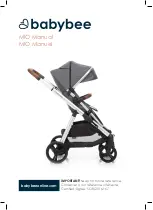
Installation of the Emulation System
FR Family FR81S Series, Emulation System, Doc. No. 002-04887 Rev. *A
13
Figure 4-1. External Appearance of MB2100-01-E
Table 4-1. External Appearance of Embedded Emulator MB2100-01-E
No.
Name
Description
(1)
Debug interface connector
Connects to the user system using the debug interface
cable.
Connector part number: HRM-200-2S-C(40) from
HIROSE ELECTRIC Co., Ltd.
(2)
Option connector
Connector for connecting to optional components. This
connector also doubles as the product maintenance port.
Take care to avoid touching metal parts of this connector
with your hand or other objects when the connector is not
connected.
(3)
POWER LED
This light is on when the power is on and off when the
power is off.
The light is off when the USB suspended.
(4)
DEBUG I/F LED
Indicates the communication status of the debug
interface bus. The light turns on during communication.
(5)
USB LED
Indicates the communication status of the USB bus. The
light turns on during communication.
(6)
READY LED
This light turns on when the emulator and the host
computer are able to communicate.
(7)
EXTRA LED
This light turns on when operating with various functions
of the debugging software. See the SOFTUNE
Workbench Operation Manual of the debugging software
for details.
(8)
POWER switch
Turns the power to the emulator on and off.
(9)
USB connector
Connects to the host computer using a mini USB cable.
The debug interface cable is a cable with SMA coaxial connectors that uses a 1.5D-2V (characteristic impedance
50Ω) wire core. The maximum permissible communication speed from the MCU to the emulator is
50Mbps
regardless of the cable length. In Table 4-2. Cable Length and Communication Speed for Embedded Emulator
MB210100-01-E
the cable length and maximum communication speed for emulator is shown.














































